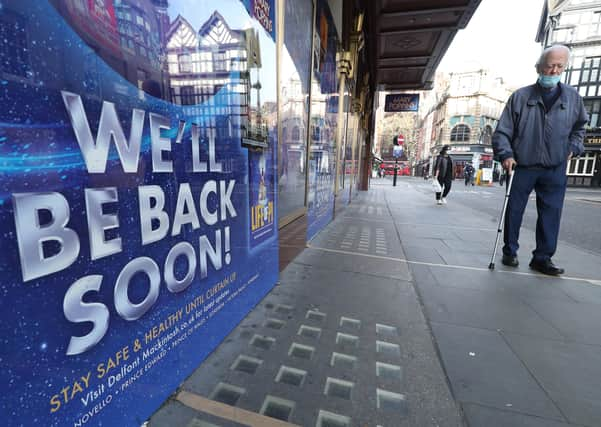Another slap in the face for the arts as theatres, museums and galleries held back from reopening: Anthony Clavane


The Sutton Hoo discovery, he declares, has debunked the myth of the Dark Ages. “These people were not just marauding barbarians. They had culture. They had art.”
The Dig is a charming movie about one of the most famous excavations in British history. The year was 1939, the country was on the brink of war and, in its own understated way, the film has a lot to say about the persistence of the past, love and death and the stark beauty of our island’s open landscapes.
Advertisement
Hide AdAdvertisement
Hide AdFor some reason, though, it was the archaeologist’s powerful speech, about the importance of art in a time of national crisis, which has stayed with me the most.
When the Prime Minister unveiled the Government’s plans for ending the current lockdown restrictions earlier this week, what were your first thoughts?
When could you meet up with friends and family? When could you get a haircut? When could you down a pint in your local pub? When could you pump your upper arm muscles, biceps and triceps at the gym?
Or – a popular one in my household – when could you next watch your team play their unique brand of attacking football? (Apologies if you’re not a Leeds United fan). Or was it: when can I visit a theatre, a museum or an art gallery? These venues will only be allowed to open their doors from May 17 at the earliest – whereas gyms, hairdressers and the non-essential retail sector will be open from April 12.
Advertisement
Hide AdAdvertisement
Hide AdAs Rebecca Salter, the president of the Royal Academy of Arts, said: “If we do genuinely worry about the mental state of this nation having been locked away then I would like an explanation into why the Government feels retail therapy will make people feel better but ‘art’ therapy, coming to see pictures, can wait another five weeks.”
This is yet further proof that we are living in philistine times.
As a result of Brexit, musicians and actors face extra red tape and fees for visas to tour European countries. Despite a Culture Recovery Fund belatedly being set up to help tackle the crisis facing cultural organisations and heritage sites, creative workers have suffered appalling financial losses.
The government bailout might have helped the big institutions, but thousands of self-employed artists have been hung out to dry. At the peak of the pandemic, according to Barbican chief Nicholas Kenyon, the value of the arts and entertainment sector fell by 46 percent; and it has yet to recover.
Advertisement
Hide AdAdvertisement
Hide AdNo wonder fewer young people than ever are choosing to study arts degrees.
When it comes to the creative industries, we are among the world leaders. The sector brings £18.3billion to the UK economy.
But putting the date for reopening back to May 17 is another slap in the face. In the words of Thomas Marks, the editor of Apollo magazine: “It looks like a clear expression of what many who work in the arts have come to suspect of this government: that it sees culture as an afterthought, something easily left on the shelf”.
Culture should never be viewed as merely a nice luxury. It grows the human imagination. As the Sutton Hoo discovery revealed, this nation has a rich, sophisticated and imaginative artistic heritage stretching back centuries.
Advertisement
Hide AdAdvertisement
Hide AdThere is a glimmer of hope in the way that certain organisations, through live streams and digital productions, have reinvented themselves during the pandemic.
An innovative online virtual gallery, featuring poetry, textiles, artwork, dance and film, has been put together by communities in Leeds. And a new network has been created in the city, with artists now able to apply for bursaries worth thousands of pounds.
Culture Secretary Oliver Dowden has often praised local arts institutions. “(At) the Leeds Playhouse or wherever else across the UK,” he insists, “culture matters to people and matters to the local economy.”
In next week’s budget, Chancellor Rishi Sunak needs to prove that this is not just lip service – and that funding the arts is not the Government’s lowest priority.
Advertisement
Hide AdAdvertisement
Hide AdSupport The Yorkshire Post and become a subscriber today. Your subscription will help us to continue to bring quality news to the people of Yorkshire. In return, you’ll see fewer ads on site, get free access to our app and receive exclusive members-only offers. Click here to subscribe.
Comment Guidelines
National World encourages reader discussion on our stories. User feedback, insights and back-and-forth exchanges add a rich layer of context to reporting. Please review our Community Guidelines before commenting.